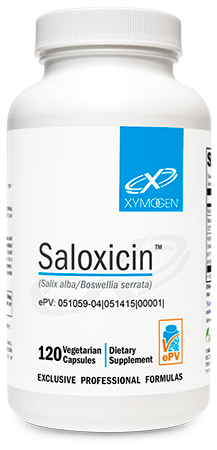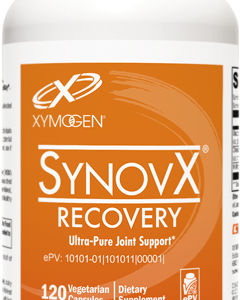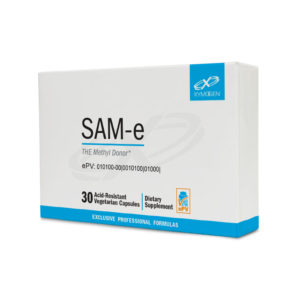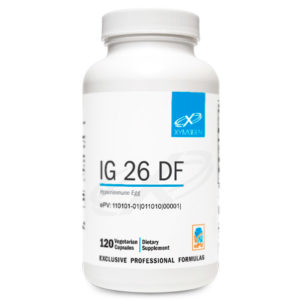Scientific Information/Data
White Willow Bark (Salix alba) Willow bark has been used for thousands of years to help support eicosanoid and cytokine balance and to help relieve discomfort.[1-3] Willow bark is currently approved by the German Commission E and the European Scientific Cooperative on Phytotherapy (ESCOP) for these purposes. Willow bark is also recognized in the United States for its role in supporting joint comfort.[1] Willow bark contains glycosides, salicylates, flavonoids, tannins, aromatic compounds, and acids. A 2007 Cochrane review of the literature found moderate evidence that Salix alba positively affected eicosanoid metabolism and produced results that were comparable to those obtained by other commonly used compounds. Favorable results were obtained when the Salix alba in the studies was standardized to 120 mg or 240 mg salicin. Saloxicin™ provides a standardized 120 mg dose of salicin per serving.*[4]
Various randomized placebo-controlled studies suggest that willow bark produces positive effects on joint discomfort. The usual dose of salicin is 240 mg per day,[5] which is the intake recommendation for Saloxicin. Pharmacokinetic evaluations reveal that salicylic acid is the major metabolite of salicin, though other components of willow bark are believed to provide relief as well.[6] The mechanism of action of white willow bark appears to involve an effect on both arachidonic acid-derived eicosanoids and cytokine compounds.*[7]
5•Loxin®, a standardized Boswellia serrata extract enriched to 30% 3-O-acetyl-11-keto-ß-boswellic acid (AKBA), is ten times more concentrated than ordinary B serrata. Boswellia serrata is an ayurvedic herb whose principle constituents—boswellic acid and alpha-boswellic acid—may help maintain healthy leukotriene metabolism by reducing the activity of the enzyme 5-lipoxygenase.[8] 5-lipoxygenase (5-LOX) catalyzes the synthesis of unfavorable leukotrienes.*
A randomized, double-blind, placebo-controlled trial assessing the efficacy, safety, and tolerability of Boswellia extract produced statistically significant and clinically relevant decreases in knee discomfort, increases in knee flexion, and increases in walking distance.[9] A randomized, double-blind, placebo-controlled study specifically designed with 5•Loxin resulted in statistically significant improvements in comfort and physical function and a significant reduction in matrix metalloproteinase (MMP) in synovial fluid.[10] MMP represents a class of enzymes that selectively hydrolyze peptide bonds and degrade structural proteins; they play a crucial role in the degradation of joint tissues. 5•Loxin shows significant inhibition against several MMPs. It helps prevent the formation of human recombinant TNF-α inducible MMPs, which further facilitates the maintenance of healthy cartilage and cell-cycle regulation.*[11,12]
BerryVin™ (40 mg) contains a blend of blueberries, strawberries, escobillo, and cranberries, along with grape and pomegranate extracts. This bioflavonoid-rich berry powder provides polyphenols, anthocyanins, ellagic acid, and an antioxidant capacity of 4000 TE/g to fight free radicals. It may also provide substantial antioxidant support for soft tissues. Bioflavonoids are thought to act synergistically to inhibit cyclooxygenases, lipoxygenases, and phospholipases, ultimately supporting healthy eicosanoid metabolism and favorable cytokine balance.*[13,14]
*These statements have not been evaluated by the Food and Drug Administration. This product is not intended to diagnose, treat, cure, or prevent any disease
References
1. Natural Standard Database. Willow Bark (Salix Spp.). Somerville, MA: Natural Standard; 2012. http://naturalstandard.com/databases/herbssupplements/ willowbark.asp#undefined. Accessed August 2, 2012.
2. Singh AP. Salicin-A natural analgesic. Ethnobotanical Leaflets. 2003;1:1-4. http://opensiuc.lib.siu.edu/ebl/vol2003/iss1/8. Accessed August 2, 2012.
3. Fiebich BL, Appel K. Anti-inflammatory effects of willow bark extract. Clin Pharmacol Ther. 2003 Jul;74(1):96; author reply 96-7. [PMID: 12844141]
4. Gagnier JJ, van Tulder MW, Berman B, et al. Herbal medicine for low back pain: a Cochrane review. Spine. 2007 Jan 1;32(1):82-92. [PMID: 17202897]
5. Maroon JC, Bost JW, Maroon A. Natural anti-inflammatory agents for pain relief. Surg Neurol Int. 2010 Dec 13;1:80. [PMID: 21206541]
6. Schmid B, Kötter I, Heide L. Pharmacokinetics of salicin after oral administration of a standardised willow bark extract. Eur J Clin Pharmacol. 2001 Aug;57(5):387-91. [PMID: 11599656]
7. Khayyal MT, El-Ghazaly MA, Abdallah DM, et al. Mechanisms involved in the anti-inflammatory effect of a standardized willow bark extract. Arzneimittelforschung. 2005;55(11):677-87. [PMID: 16366042]
8. Safayhi H, Boden SE, Schweizer S, et al. Concentration-dependent potentiating and inhibitory effects of Boswellia extract on 5-Lipoxygenase product formation in stimulated PMNL. Planta Med. 2000 Mar;66(2):110-3. [PMID: 10763581]
9. Kimmatkar N, Thawani V, Hingorani L, et al. Efficacy and tolerability of Boswellia serrata extract in treatment of osteoarthritis of knee—a randomized double blind placebo controlled trial. Phytomedicine. 2003 Jan;10(1):3-7. [PMID: 12622457]
10. Sengupta K, Alluri KV, Satish AR, et al. A double blind, randomized, placebo controlled study of the efficacy and safety of 5-Loxin for treatment of osteoarthritis of the knee. Arthritis Res Ther. 2008;10(4):R85. [PMID: 18667054]
11. Laila Impex Research Centre. 5-LOXIN® overview. PLT. http://www.plthomas. com/540/97/5-loxin-. Accessed August 8, 2012.
12. Roy S, Khanna S, Krishnaraju AV, et al. Regulation of vascular responses to inflammation: inducible matrix metalloproteinase-3 expression in human microvascular endothelial cells is sensitive to antiinflammatory Boswellia. Antioxid Redox Signal. 2006 Mar-Apr;8(3-4):653-60. [PMID: 16677108]
13. Havsteen B. Flavonoids, a class of natural products of high pharmacological potency. Biochem Pharmacol. 1983 Apr 1;32(7):1141-8. [PMID: 6342623] 14. Kim HP, Son KH, Chang HW, et al. Anti-inflammatory plant flavonoids and cellular action mechanisms. J Pharmacol Sci. 2004 Nov;96(3):229-45. [PMID: 15539763]







Reviews
There are no reviews yet.